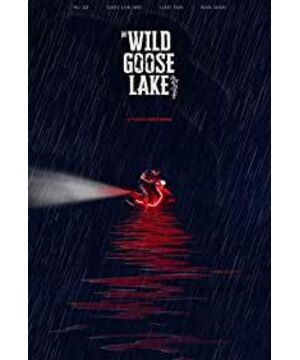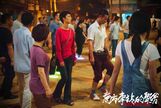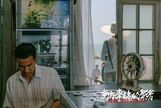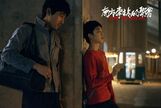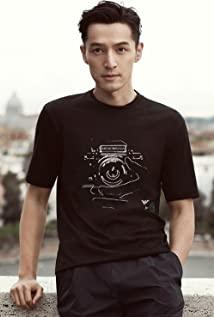Recently, Diao Yinan's new film "The Gathering at Southern Station" landed on theaters. The release of the film brought a split evaluation. Some people admired the film’s unique audio-visual style, but others criticized it as just a style exercise without real characters and cores. And this kind of transformation is not only in Diao Yinan, but to a certain extent, it has become a common experiment and exploration in the sixth generation of directors to which he belongs.
The sixth generation of directors became famous in the 1990s. About this group, controversy and discussion have been very heated. Whenever a new film appears, word-of-mouth tears and discourse disputes will inevitably arise on the Internet. It can be seen that the sixth generation of directors Creativity and influence are continuous. In recent years, they have not only made some gains in international film festivals, but also won a certain amount of box office recognition. Among them, films such as "Children of the Rivers and Lakes", "Everlasting Earth", "A Cloud Made of Rain in the Wind" can be described as a playground for public opinion and topics.
In the general classification, Diao Yinan is classified as the category of the "sixth generation" director, but unlike his peers Zhang Yuan, Wang Xiaoshuai, Lou Ye, Jia Zhangke and others, Diao Yinan did not come from the film school system. After graduating from the Central Academy of Drama, he first did avant-garde drama, then entered the film industry as a screenwriter, and did not start filming until the new millennium.
The first two works of Diao Yinan entered the industry were not released, and became so-called "independent films." This kind of film has a unique cultural significance around 2000, and the use of images has opened up another kind of writing about the Chinese people's own situation. It is generally believed that it contains an attitude towards society.
Author|Yu Yaqin
01
Sixth generation director
Together to create a Chinese film noir style
For a long time, Diao Yinan was regarded as a director obsessed with "film noir", and the only four directors' works ("Uniform", "Night Train", "Day Fireworks", and "The Party at Southern Station") were all trying to construct A set of Chinese film noir narrative and style. Therefore, Diao Yinan's works have indeed shown more and more his mastery of the film noir style.
However, if you look closely, the style of film noir is actually widespread among the sixth-generation directors: the protagonist in "East Palace West Palace" wanders in a fringe area and has to entangle with the police representing power and tell the story of his own desire; The protagonist in Xiaowu is a kind-hearted thief. He was disliked by his former good buddies, betrayed by his beloved woman, betrayed by his parents, and finally suppressed with dignity; "Suzhou River" is on the verge of betraying love. The story of how the character retrieves his beloved, for the money, the male protagonist does unforgivable things, he can only self-anaesthetize in the "mermaid" legend.
Film noir (Film noir) has a very early source, which can be traced back to Hollywood movies in the 1940s. When people are tired of a certain mainstream of the distinction between good and evil, such dark-themed movies become popular. The protagonist of this kind of film is always attacked by the government and criminal groups, and walks on the edge of law and morality. We sympathize with the protagonist's experience, but it is difficult to say that he is innocent, because all violence and danger are often due to greed and sexual desire, which is the evil of human nature.
But at the same time, film noir often contains such a narrative logic. The protagonist is not inherently evil when doing evil. He is coerced by various forces, driven by fate, and even more affected by the social environment. Every tragedy is an inevitable accident. Therefore, this makes film noir more social and philosophical.
In Diao Yinan's films, he will continue to interpret the despair of human nature. In the story of crime and desire, human struggle appears humble and ridiculous. The characters in his stories always want to get rid of their predicament by changing their identities, and as a result, there is always an invisible hand that directs even greater tragedies.
The same is true of "The Gathering at South Station". The story of the movie is very simple. Zhou Zenong, played by Hu Ge, was involved in a police murder case because of gang struggles when he was released from prison, thus embarking on an escape that ended without beginning. The movie constantly uses flashback to push the truth out of the fog little by little.
The title of the movie is a bit convoluted and quite poetic. The English title "The wild goose lake" gives a sense of desolation, which fits the atmosphere created by this movie very well. Diao Yinan obviously has a good literary accomplishment. In some interviews, he did not shy away from talking about the influence of Chandler or Polano on him. Therefore, we can judge that there is a literary background under Diao Yinan's vague narrative. Therefore, those suspenseful stories filmed by Diao Yinan are not good at reasoning, but are better at creating a black atmosphere.
It can be said that the author showed his disappointment with humanity in this movie. Unlike ordinary gangster movies, the loyalty and humanity in this movie are extremely thin. The movie revolves around betrayal and "reporting". The fate of all characters is different. Being in a biological chain where the mantis catches the cicada and the oriole is behind, he can't help it.
For the 300,000 rewards offered by the police, various forces were involved in an unknowable fate. Zhou Zenong's relatives, friends and enemies did not hesitate to construct lies and conspiracies to get the money, but they also paid their own prices. In fact, Zhou Zenong did not really "flee", his destiny is set, that is, he will die. He just hoped that the death was worth a bit, and used false reports in exchange for the money as a comfort to his wife (although at the cost of betraying Liu Aiai, a woman he trusted). In the end, Zhou Zenong died under the gun of the police, and his wife received money from Liu Ai'ai, but the police witnessed all this and the conspiracy will eventually be revealed.
Sex and violence seem to be one of the main motifs of Diao Yinan's films. The drama of his films is also unfolded from this, and the law of attraction is also established by this. Diao Yinan’s film posed a difficult question: how do Chinese deal with the relationship between desire and reality. If people choose to suppress themselves in daily life, how do individuals choose under extreme circumstances?
Therefore, we were able to watch the most violent scenes in the Chinese cinema space: cutting heads on the fly, killing people with umbrellas, donating blood, and killing decisively. "The Gathering at South Station" seems to have the charm of some ancient dragon martial arts novels, but the chivalry is gone, only the bottomless darkness.
02
Chinese art film
Spectacleization and ideographic signs have their rationality
Critics have always questioned the Chinese art film directors deliberately landscaping Chinese society. If Zhang Yimou’s generation was landscaping folk customs, Jia Zhangke’s generation was landscaping reality. Jia Zhangke has also implanted many similar elements in his recent feature film "Children of the Rivers and Lakes", but as a master of symbols, he has effectively transformed these so-called spectacles. When Jia Zhangke uses a surreal approach to express the advent of UFO, the protagonist is still unaware that the outside world has changed. This kind of direct metaphor makes it easy for the audience to find a realistic correspondence. As for the ridiculous scenes in the movie, such as the fun of the grave head and the showbiz, Jia Zhangke rationalized it under the name of "Jianghu". The "jianghu" in the movie finally disappeared in the public camera, and the so-called spectacle was also dispelled.
Lou Ye's "A Cloud Made of Rain in the Wind" has a similar display logic of Chinese wonders to "The Gathering of Southern Station", and both focus on urban villages where the problems of reform and opening up and urbanization are concentrated. The difference is that Lou Ye talked about idiotic men and women with the problem of the village in the city. He showed the entanglement in emotions as a spectacle. Taking the polyangular love of two generations as the main line, it shows how the greed of money alienates human nature, and interprets the tragic song of a transforming era. And Diao Yinan's taste obviously does not lie in the obsession of love. He uses the space of the village in the city as the location of his movie. The cruel events that occur in this fantasy space seem to be inseparable from the big environment. Therefore, it is difficult for us to distinguish whether the movie presents a spectacle or reality.
And Wang Xiaoshuai’s recent "Earth and Time" is a magnificent work attempting to write the theme of Chinese people and the times. The film tells the relationship between the times and the family: a family of three caused by family planning forms a triangular structure. Once placed in the absolute After the location of the son was missing, the family structure collapsed. The metaphor of home and country is very obvious in Wang Xiaoshuai’s new film. He also uses a lot of ideographic symbols, such as the huge statue of Mao Zedong and the "massage" billboard in the tube building that represents the degeneration of the spirit of the times...
On the Internet, some people criticized "The Gathering at Southern Station" for its concentrated display of Chinese wonders, which was too clumsy and deliberate. Most of the audience may also have such a perception. In addition to the direct display of violence and eroticism, the movie also has a large number of representations of magical China. The film takes Zhou Zenong's actions as the main line of the film, and he does not hesitate to sacrifice the main line of the story to show the wonder.
The director's narrative is wandering, setting up a large number of idle pens, and carefully and meticulously showing the society of a village in a city on the outskirts of Wuhan, where the story took place. Therefore, it is not difficult for us to find various metaphors in the movie text. The various spectacles that occurred in the suburbs where Zhou Ze Nong is hiding in Tibet can be regarded as a microcosm of fantasy:
A group of policemen chased Zhou Zenong into a zoo. In the middle of the night, only a pair of weird animal eyes could be seen; Zhou Zenong and the swimming girl Liu Aiai escaped into the "beautiful snake" performance area. "The polygonal prism turns these two people into countless individuals; there are also those who dance square dances at the junction of urban and rural areas. Some of them are actually played by police officers wearing shiny shoes...
It can be said that the world presented in this movie is a bit like a theme park of Chinese wonders. The audience follows the footsteps of the protagonist to enter it, walk around and watch, lean over it, and participate in the fate of the characters. These seemingly vulgar Chinese wonders are part of the new world that Zhou Zenong does not understand. Zhou Zenong is a released prisoner. He is isolated from society and the world is changing too fast. His final loss and confusion are very metaphorical.
Although Zhou Zenong is the protagonist of the movie, what the movie cares about is not only his fate, but the outside world that he sees through his eyes. It is a dangerous and exciting world, a world full of violence and betrayal. It's not that there is no warm color in this world, but it is too thin and will eventually swallow everyone.
03
Creation anxiety brings
The sixth generation overall form madness
If the common motif of the fifth-generation directors is to think about the nation and the country, the sixth-generation generally expresses personal experiences and personal emotions. Diao Yinan's films are not without social thinking, but hidden deeper. In his words, "Style is a weapon against all mediocrity and corruption."
As mentioned above, Diao Yinan's works have a stronger literary quality. Literature is not a story, and Diao Yinan often does not seek to tell a story that fits perfectly. He likes to leave blank and like to create a certain atmosphere. "The Gathering at South Station" is not a solitary example, but the exploration of form is a general shift of Chinese art film authors in recent years. It can even be said that a kind of anxiety about form is diffused in the ecology of Chinese art films. For a long time in the past, film was regarded as the art of narration, and our judgment of a film was often based on text. In fact, as an element of independent art, the ideographic function of its audiovisual language is often ignored by the audience.
Establishing style is a topic that must be faced by current art film creators. If we say that at present, some directors are obsessed with collage and chaos of Chinese social news, while another group of directors have embarked on the path of exploring the aesthetics of form. "The Gathering at South Station" is definitely a film with a high degree of formality, and its fragments can be almost seamlessly transplanted to the art gallery. Diao Yinan obviously borrowed and misappropriated image art. The characters in the movie were shrouded in neon lights, weird and distorted; and the blank spaces of some still frames made the movie more pauses...
Although the director of the art film has a rich material library, when the narrative of "poor mountains and evil rivers, long shots of police prostitutes" is repeatedly interpreted, what can the film express? Formalism and the tendency of "fascination" are a very important feature of current art films; the dispute between form and content is a commonplace issue in artistic creation. Certain forms require corresponding content to carry. When the exploration and excavation of the subject matter are subject to various restrictions, the filmmakers turn to a breakthrough in form, which seems to be a logical turn.
"The Gathering at Southern Station" also has some unsatisfactory points. Although there are several roles in the movie, almost every role is a functional character, and it is difficult to impress people. It can even be said that the real protagonist of the movie is a strong audiovisual style, which is a strong audiovisual but weak plot.
In addition, how do we understand some unreasonable artistic creations in movies? For example, why even motorcycle thieves have a lot of pistols and dare to violently attack the police; why Zhou Zenong wants his wife to report him directly, so that the police are not afraid of suspicion; why the shameless profession of accompany swimmers can be in an unattended occupation A large number of wild lakes exist...I understand that this is the director's reinterpretation of social news, but this kind of density and exaggeration has somewhat affected the audience's real experience and the film produces more effective intertext and dialogue.
Although a good film can provide a very rich space that can be interpreted in various ways, the text itself should have a relatively complete meaning. The rupture of form and content is a flaw that cannot be ignored in this film. No matter how gorgeous the audiovisual style is or how to mobilize the audience's emotions, it still cannot make up for the loopholes in the plot. But it eventually developed into an empty formalist action, unable to match the content and humanistic spirit.
The problem with Lou Ye’s "Clouds Made of Rain in the Wind" is also true. When Lou Ye tells the story in a typified movie style, as a crime movie with puzzle solving at its core, the story itself is bloody. And unreasonable did not allow the audience to participate in the puzzle solving process well (the film suspense is too scribbled); and the overly dense and jumpy plot did not give the audience (especially those who are not familiar with Lou Ye's works) enough imagination space. In such a narrative that is almost piled up by coincidence, the story is closed, blocking the extension of the audience, so we can only strengthen our understanding of the film through knowledge outside the film. And whether this level of understanding is rich enough determines whether we will identify with this movie.
Of course, it is not difficult for us to find that these directors have broken through the mainstream theater space in China. They are trying to create a new film language, a new way of viewing, to fight against the rigid and authoritarian mainstream aesthetics. Therefore, watching "The Gathering at Southern Station" requires threshold and comprehension, and it is also necessary to put such a movie into the entire cultural environment for investigation.
This article is exclusive original content. Author: Yu Yaqin; Editor: Walk Around; Proofreader: Xue Jingning. Reprinting is not allowed without the written authorization of the Beijing News, and you are welcome to forward it to Moments of Friends.
This article was first published on the WeChat public account-Beijing News Book Review Weekly, and reply "Book Donation" in the public account dialog box to get the benefits prepared by Book Reviewer for you.
View more about The Wild Goose Lake reviews


